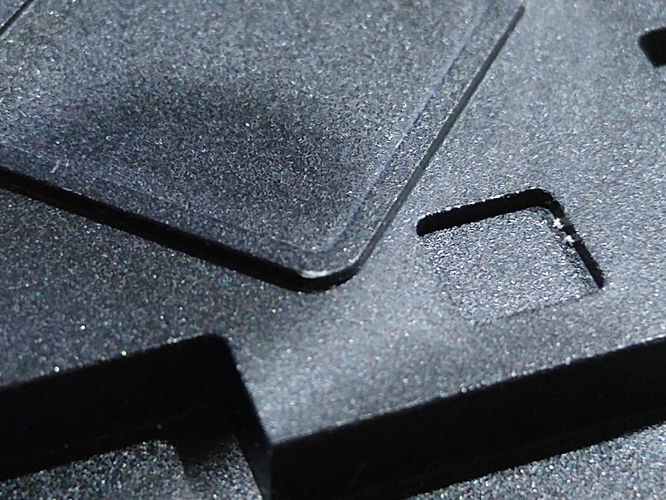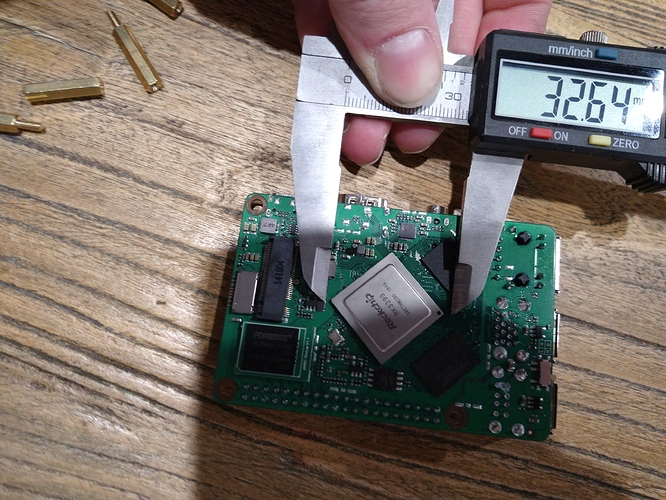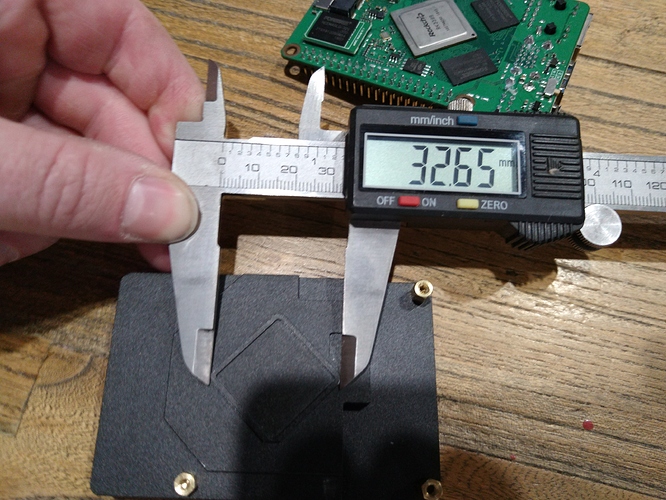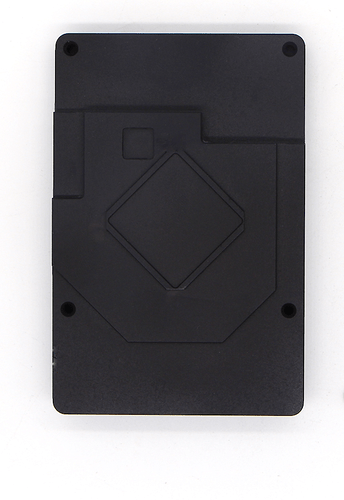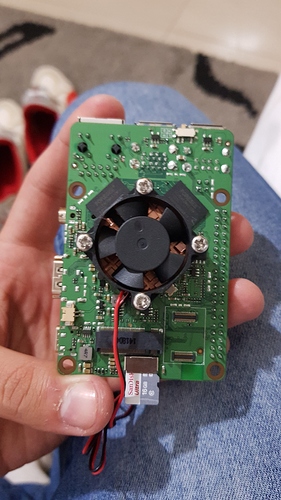Ok, I got a strange problem, when I have the large heatsink installed, my system is unstable and I get lots of crashes and errors, but if I just have the bare PCB it’s rock solid, the heatsink must be interfering with it some how, but I can’t figure out how, anyone else experience this, or know what might be the cause.
Instability with big heatsink
Make a visual inspection if the board is damaged, some people reported problems after using the large heatsink. As can be seen here.
https://forum.radxa.com/t/official-heatsink-for-rock-pi-4/76/31?u=pypirock
Appears to have taken a small chip of the paint off the heatsink also
Seems like a design fault to me
Could someone advise what this component is and what it’s value is so I can replace it?
The gap is really too small, and we realize that.
In the latest version of the heatsink, all four corners are removed
Thanks Luffy,
Know where I can get the spec on that component?
Is it likely to cause constant crashes?
My board is now unstable even without the heatsink,
It’s virtually a $100 paper weight at this point in time, very frustrating!
Is it likely I can get an RMA on my board from Allnet China?
You can stress test with your ROCK Pi 4 to see if the hardware is stable or not.
There is no problem with the size of the heatsink, but the installation process needs to be very careful.
If your ROCK Pi 4 hardware does have problems and the stress test failing. Of course it can be replaced well.
Please remove the rib by filling it.
Why it has that rib is there is a pure mystery as it serves no purpose apart from drastically increasing the chance of damage.
That way the spacer size can be increased and also gain more normal and easily available sizes.
I also have the same and because there is movement on fitting usb…
Most who have never removed the heatsink will prob find they are the same, if they do.
I actually put a dab of epoxy back on what I think is an inductor, but you may have a short or at least resistance to ground.
There is a huge problem with the size of the heat sink rib (pointless) as the board mounts have movement that chip away at the ‘inductor’.
The damaged element is a 2.2microH choke, according to RK808-D datasheet.
Before replacing, just check if it’s soldered correctly.
Before I tear apart my rockpi4b’s, Is only for the big black heatsink
or does it also apply to the allnet case with the integrated heat sink ?
The integrated heat sink does have all 4 corners cut off. Still, care has to be taken when assembling the Rock Pi 4. You can find the assembly instructions on video on the bottom of the product description.
Can you please also make sure that the bundled screws are of the right length?
In the current package they are way too long and they do not fit in the holes of shorter standoffs.
The idea of filling the rib is also worth consideration IMHO. There would be no need for copper pads then.
I think so the rib has zero thermal effect have never seen its like on any cpu package.
But yeah if filled we no longer need copper shim just better more standardised pillars that do have screw depth.
Also there will be more air gap from the cpu heat sink to other components.
The corners are shaved but m2.5 pillars sit in m3 mounting holes and when fitting usb devices its near impossible to stop movement.
The spacing is less that the overall tolerance of movement due to the rib and the choke @Zoran mentioned.
So is the small chip off the corner of the choke likely to be the cause of my instability, or is it likely that there is another problem with the board?
I posted it in another thread already but just wanted to share again.
I use this small heatsink to cool down my Rocky Pi which I use for media center and it turned out really great.
I do have the big heatsink but haven’t tested it due to these problems you guys show.
Forgot to put the link…
The downside there, is that you’ve got moving parts. For something like this, that is extremely undesirable.
Regarding the “problems”, as long as you are careful with assembly, you’ll surely be fine. I think a lot of people buy things like this with a picture of the end result, but coming from a consumer products mentality, where everything is already put together in a plastic box that protects it even if your dog grabs it and buries it in the yard for a few days. I’ve seen far too many threads about people complaining about things that they eff’d up themselves, like the one where someone was complaining about it not coming with spare parts to replace the ones that he carelessly dropped into the rug. Not only a danger for carelessly losing parts, but rugs are great for helping you build up static charges.
I had the same issue.
It’s possible that you just ripped of the choke from the board, i.e. the choke lost contact with the board. Before replacing, try to solder it, very carefuly, or ask a pro if you are not experienced, it’s easy to do more damage else.
Tried reflowing the solder, no change still crashes all the time.
I found the suggestion of resoldering the inductor to be somewhat dubious. Its not really the kind of thing that would lead to an intermittent crashiness, because it would mean that you’ve lost electrical connection, thus whatever is running through it wouldn’t power on at all.
A chipped corner on that inductor is not likely to cause instability. The reality is that all that part is, is a coil of wire around a ferrite core.
If you’re having stability problems, the first thing you should try is a different/better power supply. I was having a really serious stability problem with one of my rock960c’s (same as a rockpi4, but with the vastly superior 96boards footprint), and it went completely away when I switched to a better power supply than the one it came with.
Thanks for your reply.
I have tried 4 different power supplies.
Motorola turbo charger
Nintendo switch power supply
Blitzwolf qc3 charger
Raspberry pi 5v power supply.
All have same problem.
One thing that does change the problem,
The board seems slightly more stable without the heatsink attached.

